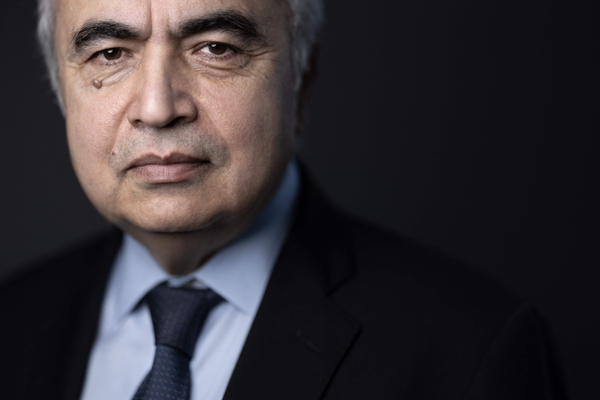You are here
World's clean energy transition 'too slow' — IEA
By AFP - Oct 13,2021 - Last updated at Oct 13,2021

Flames from the Alisal Fire rise near firefighters in a pickup truck at Corral Canyon on Tuesday near Goleta, California (AFP photo)
PARIS — The global transition to clean energy is still far too slow to meet climate pledges and risks fuelling even greater price volatility, the International Energy Agency (IEA) warned on Wednesday.
"We are not investing enough to meet for future energy needs, and the uncertainties are setting the stage for a volatile period ahead," said IEA chief Fatih Birol.
"The social and economic benefits of accelerating clean energy transitions are huge, and the costs of inaction are immense."
In its annual World Energy Outlook report, published just weeks before the COP26 summit in Glasgow, the IEA calculated that investment in clean energy projects and infrastructure would need to be more than trebled over the next decade if those pledges are to be met.
At the summit, countries will come under pressure to commit to decisive action to limit global warming to 1.5ºC above pre-industrial levels, as pledged in the landmark 2015 Paris climate agreement.
Is 1.5C still achievable?
The IEA — which advises developed countries on energy policy — said that renewables such as wind and solar energy continued to grow rapidly, and electric vehicles set new sales records in 2020, even as economies were bent under the weight of COVID-19 lockdowns.
However, "this clean energy progress is still far too slow to put global emissions into sustained decline towards net zero" by 2050, which the agency believes will help limit the increase in global temperatures to 1.5ºC.
The agency analysed two possible scenarios.
The first looked at the measures governments had already put in place or specific policies they were actively developing.
And while almost all of the increased energy demand until 2050 could be met by low emissions sources, annual emissions would still be roughly the same as today as developing economies build up their nationwide infrastructure, the IEA said.
Under this scenario, temperatures in 2100 would be 2.6ºC higher than pre-industrial levels.
The second scenario looked at promises made by some governments to achieve net-zero emissions in the future, which would see a doubling of clean energy investment and financing over the next decade.
If these pledges were fully implemented in time, demand for fossil fuels would peak by 2025, and global CO2 emissions fall by 40 percent by 2050, the IEA said.
Here, the global average temperature increase in 2100 would be around 2.1ºC, which would represent an improvement, but would still be way above the 1.5ºC agreed under the Paris accord, it concluded.
‘Bumpy ride’
“Reaching that path requires investment in clean energy projects and infrastructure to more than triple over the next decade,” Birol said.
“Some 70 per cent of that additional spending needs to happen in emerging and developing economies.”
The IEA argued that the extra investment might be less of a burden than some might think.
“More than 40 per cent of the required emissions reductions would come from measures that pay for themselves, such as improving efficiency, limiting gas leakage, or installing wind or solar in places where they are now the most competitive electricity generation technologies,” it said.
The report also highlighted that insufficient investment was contributing to uncertainty over the future.
“Spending on oil and natural gas has been depressed by price collapses in 2014-15 and again in 2020. As a result, it is geared towards a world of stagnant or even falling demand,” the IEA said.
“At the same time, spending on clean energy transitions is far below what would be required to meet future needs in a sustainable way.”
That means energy markets could face a “bumpy ride” if investment in renewables is not increased, the IEA said.
Related Articles
WASHINGTON — The United States announced a clean energy partnership on Tuesday with the United Arab Emirates worth $100 billion, the White H
PARIS — The sharp drop in prices for minerals critical to the green energy transition is masking a looming shortage due to inadequate invest
PARIS — Fatih Birol had big dreams of becoming a footballer or a filmmaker when he was younger. Instead, he became a surprising champio
















